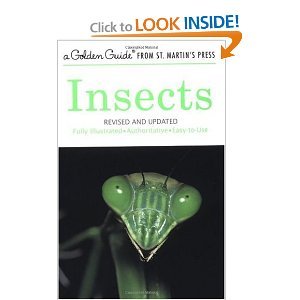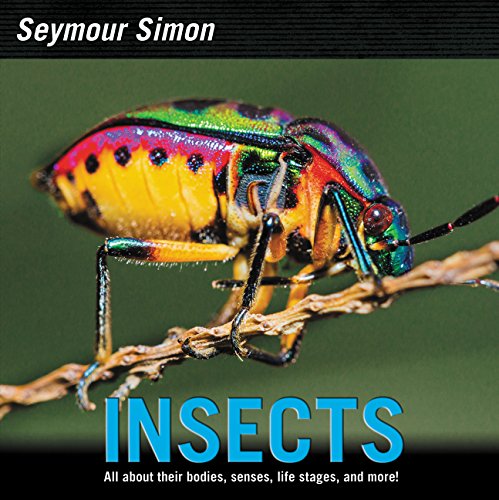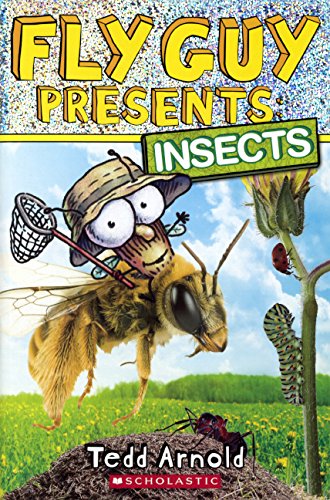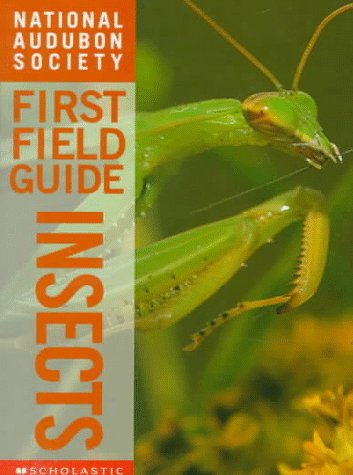-
Insects
Herbert S. Zim
Flexibound (St. Martin's Press, March 15, 2002)Enjoy and Learn! Expert Knowledge! Easy-to-Read! This handy guide to the most common, important and showy North American insects will help the novice begin a fascinating study. Includes: A key to insect groups Mature and immature forms How insects grow and develop and what they eat How to find and observe them
-
Insects
Robin Bernard
Paperback (National Geographic Children's Books, May 1, 2001)Did you know that insects are the only animals in the world with six legs? Or that other than birds and bats, they are the only animals that can fly? Learn these and other fascinating facts about what makes an insect an insect in this engrossing book on bugs! Featuring forty-five photos from National Geographic, it provides children with an up-close look at familiar favorites like butterflies and grasshoppers, as well as bugs like leaf insects and treehoppers that hide in plain sight and rarely get noticed. From birth to feeding habits, the basics are all covered here in simple text that will get young readers excited about going outside and exploring the world of creepy crawlers. “This superb book will fascinate young explorers, whether or not they are reading yet. The smooth, well-paced text is accessible enough to engage a young listener and simple enough for an early reader.” —Scientific American L
L
-
Insects
Clarence Cottam, Herbert S. Zim
eBook (Golden Guides from St. Martin's Press, Feb. 1, 2014)This eBook is best viewed on a color device.Enjoy and Learn!Expert Knowledge!Easy-to-Read!This handy guide to the most common, important and showy North American insects will help the novice begin a fascinating study. Includes:A key to insect groupsMature and immature formsHow insects grow and develop and what they eatHow to find and observe themFull color pictures, nontechnical language, and up-to-date range maps make this a gem of a guide for beginners at any age.
-
Insects
National Geographic
Paperback (National Geographic Children's Books, Nov. 1, 2001)This colorful, pocket-size field guide brings youngsters face-to-face with all kinds of amazing insects. The concise, easy-to-read text provides lots of fun facts to share with friends and just enough detail to make identification of winged, camouflaged, and other specimens easy for budding naturalists. An introduction shows children how to use the book, while the glossary and index add to the reference value. L
L
-
Insects
Seymour Simon
Paperback (HarperCollins, July 5, 2016)Award-winning science writer Seymour Simon explores the wonderful world of insects, with fascinating facts and stunning full-color photographs, in his latest nonfiction picture book. Readers will learn all about insects’ life stages, senses, bodies, and the many different kinds, including beetles, ladybugs, bees, butterflies, and more! This nonfiction picture book is an excellent choice to share during homeschooling, in particular for children ages 6 to 8. It’s a fun way to learn to read and as a supplement for activity books for children.This updated edition includes:Author’s noteStunning full-color photographsGlossaryIndexWebsite and additional reading sourcesSupports the Common Core Learning Standards, Next Generation Science Standards, and the Science, Technology, Engineering, and Math (STEM) standards P
P
-
Insects
Seymour Simon
Hardcover (HarperCollins, July 5, 2016)Award-winning science writer Seymour Simon explores the wonderful world of insects, with fascinating facts and stunning full-color photographs, in his latest nonfiction picture book. Readers will learn all about insects’ life stages, senses, bodies, and the many different kinds, including beetles, ladybugs, bees, butterflies, and more! This nonfiction picture book is an excellent choice to share during homeschooling, in particular for children ages 6 to 8. It’s a fun way to learn to read and as a supplement for activity books for children.This updated edition includes:Author’s noteStunning full-color photographsGlossaryIndexWebsite and additional reading sourcesSupports the Common Core Learning Standards, Next Generation Science Standards, and the Science, Technology, Engineering, and Math (STEM) standards P
P
-
Insects
Tedd Arnold
Library Binding (Turtleback Books, Jan. 6, 2015)FOR USE IN SCHOOLS AND LIBRARIES ONLY. Learn all about insects with Fly Guy and Buzz! Fly Guy and Buzz are ready for their next field trip! And in FLY GUY PRESENTS: INSECTS they go outside to learn all about other insects like Fly Guy! With straightforward text, humorous asides, and kid-friendly full-bleed photographs throughout, young readers will learn lots of fun facts about all sorts of bugs. Award-winning author/illustrator Tedd Arnold really brings nonfiction to life! L
L
-
Insects
None
Paperback (Kane Miller, )None



